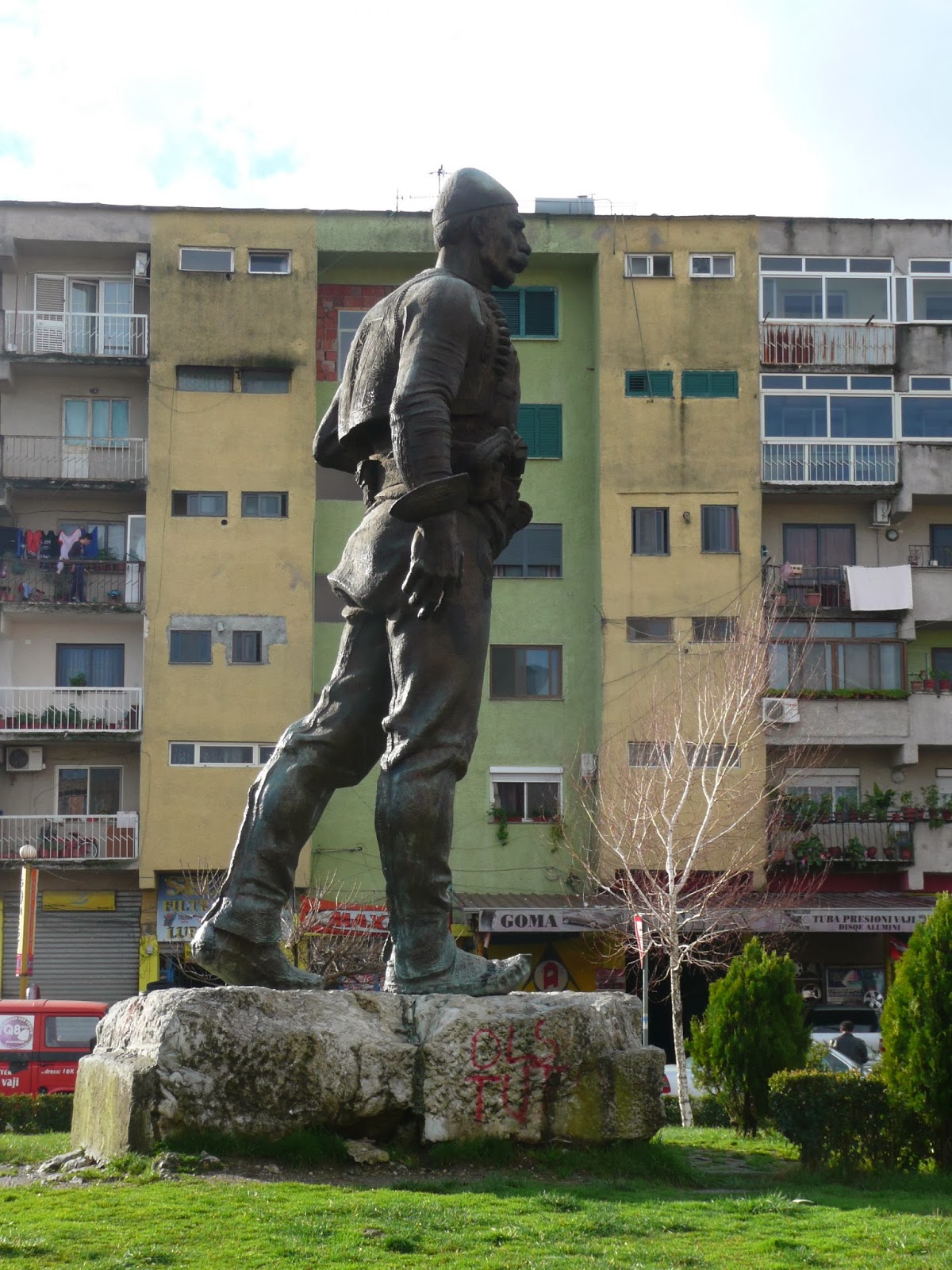The northern part of Albania is known to be more renegade in nature than other parts. It has remote mountain towns snowed in for the winter.
The Dictator Enver Hoxha burned down 3500 of the businesses in the old Bazaar area at one point during the 45 years of his reign. He felt threatened by the independent spirit of the Shkodra residents.
But this is 2014 and this friendly city is more low keyed that the capital. Because it has flat terrain, people of all ages and genders are riding their bikes. LocalMotion would be proud!!
Some of the highlights:
 |
| Dominoes anyone? |
Shkodra has a pleasant pedestrian street, markets all over the city, mosques and churches, fancy tiled sidewalks and kid friendly playgrounds! Unique in that the majority of the population is Catholic.
 |
| This is typical. A woman selling really fresh unpasteurized milk in old soda bottles. |
Activities in town include a mask factory. The registered name is "Made in Venice" and most masks are sent to Venice. Yup! There is a wonderful photo studio displaying photos by an Italian, Pjeter Marubi and soon to be, a Communist Museum with artifacts from the 45 years of fascism.
Hotel Tradita Geg & Tosk is situated right in the heart of the city and originated from an old Ottoman house. The owner and gracious host, Jan, was welcoming and our hotel room was 350 years old, swimming in antiques.
 |
| Our host, Jan |
 |
| Hallway to our room 109 and entry below |
 |
| 350 years of history, complete with the original stove/fireplace |
Dinner in the dining room was exceptional...cozy, aromatic and with music. We sat for 3 hours eating a variety of rustic cheeses, olives, pumpkin and spinach tapas and salads. Meanwhile our lamb was finishing its roasting on the spit in the big fireplace at one end of the living room. Best lamb we have ever had in Albania!
 |
| Delicious! |
The musicians played instruments that are seen in photos from the 1880s...They sat up above the fireplace on that platform. (See third photo above)
After a wonderful 24 hours (and a $15 hour massage) we took the long way home. Previously we had toured the castle and Roman Bridge so I will include those photos.
We decided to take a loop into the mountains on our way to Tirana and skip the boring highway. These are "main roads" marked on the map. The largest town on our route was Puke (pronounced Puka)
 |
| Right...there are NO guard rails on this official road |
This trip on state run roads was about 110 kilometers and took Peter 4 hours. He is fearless now!
As usual, the mountain peaks and valleys, the rivers way below us and the occasional hamlet with two houses, is always interesting. The trip finishes with a shepard with HER goats in a desolate stretch of the road.



























